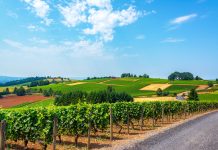
The environmental justice movement has hit a new threshold as the state legislature has now approved, and the Governor signed, a budget that includes $10 million for a new statewide notification system for pesticide application. The California Department of Pesticide Regulation (CDPR) has wasted no time in moving on the effort and has already held a series of focus group meetings to discuss the issue and begin developing the framework of the new program. This new effort will focus on advance notification of potential pesticide applications. While admitting that California already has the most robust pesticide regulatory program in the country, CDPR indicated in a recent meeting that these new notification requirements are a priority for Governor Gavin Newsom and CalEPA Secretary Jared Blumenfeld.
Existing Notification Requirements
There are some existing requirements already in place for advance notifications. Two counties, Monterey and Kern, already offer some form of advance notification, albeit very limited. In Monterey County, the public can sign up for email notifications for fumigation applications made within a quarter mile of one of ten designated schools. In Kern County, the county provides email notification to other growers surrounding a farm where a restricted use pesticide will be used.
For certain soil fumigants, including chloropicrin, metam sodium/potassium, dazomet and methyl bromide, notice of emergency response information must be provided to occupied residences and businesses within a specified distance of a buffer zone unless the applicator provides onsite monitoring. Also, if a beekeeper requests notification, they must be notified if a pesticide toxic to bees is to be applied at a site within one mile of an apiary. Finally, schools must be notified in advance of any pesticide application that will occur within a quarter mile of the school.
Three other states (Florida, Michigan and Maine) have some form of notification requirements; however, they are limited in scope and application. Florida provides a registry for persons requiring notifications, but they must reside in contiguous or adjacent property within a half mile of the application site. Michigan requires notification to someone with a physician diagnosed condition if they reside in property immediately adjacent or contiguous to the property being treated. Maine has a notification registry for applications within 250 feet, which can apply to even residential lawn treatments, and notification must occur within 6 to 14 days prior to the application.
Potential Requirements
With these new notification requirements, CDPR is looking at going way beyond any of these previous requirements or those in other states. In a recent series of focus group meetings, CDPR asked several questions in attempting to determine the bounds of this new program. CDPR is looking at several different areas, including looking at what types of pesticides and application methods will require notification, who gets notified, how they get notified and how far in advance the notification will be required.
By far, the biggest question is who gets notified. Concerns from the agricultural industry abound on this specific piece due to fears over environmental activism. The environmental justice community has been vocal that they want a countywide or statewide notification system where anyone can sign up for an email notification. Why would someone who does not live next to a field or orchard being treated want or need to know about an application unless they have an ulterior motive? One such incident happened in Monterey County where activists tried to stop a planned field fumigation after learning of the fumigation through the notification system.
Another area of concern is how broad CDPR applies this requirement. In the focus group meetings, CDPR asked if this should be limited to only restricted use materials or any pesticide. They also asked if this should apply to all types of application methods or focus on ones they consider to be the greatest risk for pesticide exposure, such as fumigations or aerial applications. Risk is a key question here as what is true risk? Just because a chemical is applied via helicopter or airplane does not mean it imposes a greater risk.
CDPR also asked how far in advance the notice should be made as well as how the notification should be made. Typical notifications are made 24 hours in advance, but CDPR is seeking guidance on whether there should be a shorter or longer notification period. As for how the notification is being made, CDPR is asking if the notification should be made with mail, email, fax or door hangers.
In the end, CDPR is committed to doing something. For the agricultural industry, the fight against our industry continues, and we must be involved to protect what we have. As stated in the beginning of this article, CDPR has acknowledged they have the most robust regulatory scheme on pesticides in the country. This will only make it tougher for farmers and easier for the anti-pesticide groups to attack our industry. There is no doubt that farmers must be careful with pesticide applications and follow all label requirements to the letter. But notifying people that do not live anywhere near where the pesticide application occurs does nothing to protect those that do.
Whether it is water, air quality, labor or pesticides, the California agricultural industry is once again under attack. Consider this article a ‘notification’ that we must stand up against overbearing and unnecessary regulations. When the time comes, be sure to weigh in and comment against these burdensome requirements that go beyond any scientifically justified reason.



















